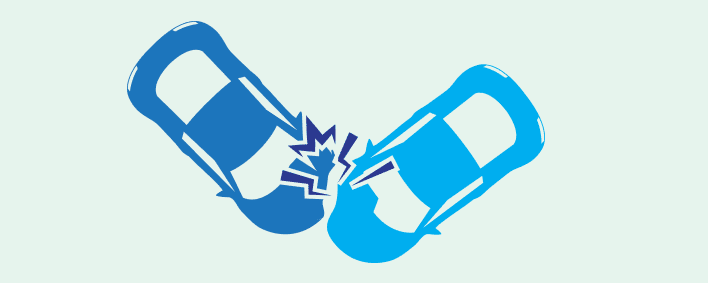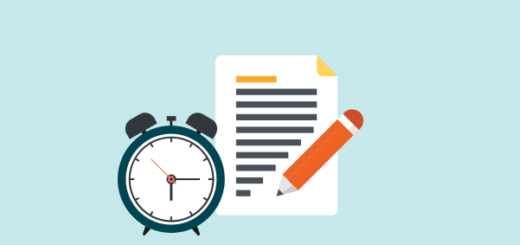Here’s What to Do When You Get in a Car Accident
Our goal is to give you the tools and confidence you need to improve your finances. Although we receive compensation from our partner lenders, whom we will always identify, all opinions are our own. By refinancing your mortgage, total finance charges may be higher over the life of the loan.
Credible Operations, Inc. NMLS # 1681276, is referred to here as “Credible.”
Accidents happen — and when it comes to driving, they happen more often than you might think. Between 5 and 6 million car crashes are reported in the U.S. annually, according to the United States Department of Transportation.
While no one wants to think about getting into an accident, it’s good to be prepared in case one happens. After all, what you do immediately after an accident can affect your car insurance rates and even your health down the road.
Here’s what to do when you get in a car accident:
What to do at the scene of an accident
Here are the steps to take at the scene of a car accident (keep in mind, these steps only apply if you or the other driver are not seriously injured and can communicate):
1. Get to safety (but remain at the scene)
First things first, if you can safely move (in some cases, you may need to remain still until medical experts arrive on the scene), it’s best to move yourself or your car to a safer area where you can deal with the fallout of the accident. Your safety needs to be your top priority after a car accident.
2. Call 911
If you or anyone else at the scene of the accident requires medical help, it’s best to call 911 right away. Even if there are no injuries, calling the police after a car accident can be helpful (it’s also required in some states). A police officer can complete an accident report, which can serve as useful proof during the claims process.
3. Exchange information with the other driver and any witnesses
You’ll need to write down any names, phone numbers, addresses, and driver’s license numbers from any drivers involved in the accident. You’ll also want to get their license plate and vehicle identification numbers, as well as the name of their insurance provider and their policy number. It’s a good idea to get the names and contact information for any passengers involved in the accident and any witnesses — especially if you believe you aren’t at fault for the accident.
4. Take pictures
If you have a smartphone or a camera on hand, take photos of damage to any cars involved in the accident, as well as the scene of the accident. Keep these photos safely stored away in the event your car insurance carrier asks you to provide them when you file a claim.
5. Contact your insurer
Notify your insurance carrier immediately to get the claims process started. Your insurance agent can give you guidance on next steps for your claim.
Learn More: How Long After a Car Accident Can You File a Claim?
What not to do after an accident
What you shouldn’t do at the scene of an accident is just as important as what you should do.
Remember not to:
- Admit fault. Don’t admit fault or sign anything that says you admit to fault or will pay the other party for damages.
- Minimize your condition. Don’t tell the other driver or police that you aren’t hurt. You very well may be hurt, as accident-related injuries can emerge later on.
- Refuse medical care if you’re hurt. Remember, your safety is the most important thing.
- Leave the scene before authorities arrive. If you or the other driver call the police to come to the scene of the accident, you both need to wait there for their arrival.
What information do I need to gather before leaving the scene?
It’s easy to get flustered after an accident, but it’s essential to collect all the key information that your insurance carrier will need to investigate the accident and process any claims. Collecting this information immediately after an accident can save you some headaches down the road.
Make sure you don’t leave the scene of the accident without collecting the following information:
- Name and contact information of drivers involved in the accident
- Driver’s license numbers and insurance information for drivers
- License plate numbers and vehicle identification numbers of any cars involved in the accident
- Names and contact information of passengers or witnesses
- Police report
Check Out: What Happens If You Get Into an Accident Without Car Insurance?
What to do after an accident
Unfortunately, it’s not over when you leave the scene of the accident.
Here are some steps you’ll generally need to take once you get home:
- Gather supporting documents. You’ll need documentation to help prove your claim. Gather the information you collected, as well as any photos or other documentation, so you have it on hand for your insurer.
- File a claim. As soon as possible following the accident, report it to your insurance provider by filing a claim. You can usually do this online, over the phone, or through your insurer’s mobile app, if it has one. Auto insurance carriers usually have a deadline for how long after an accident you can submit a claim, so don’t put off this step.
- Get checked out by a doctor. Even if you think you’re not hurt, it’s best to seek out medical attention after an accident. Injury symptoms can emerge days, weeks, or even months after a crash.
Reporting the accident: Who to call
The requirements for who you need to contact after an accident can vary by insurer and state, but generally, you should notify the following parties as soon as possible:
- Your auto insurance provider: As previously stated, you’ll want to do this immediately.
- Your lienholder: This only applies if you have an auto loan. Your lender may be the one who receives the claim check for the accident.
- The state DMV: Your state may require you to contact the DMV. For example, in California, you have to report the accident to the DMV within 10 days if anyone was injured or the vehicle damage was more than $750. If you don’t, you risk suspension of your driver’s license.
Read More: Auto Loans for All Credit Types
How to file a claim
If you choose to file a claim after a car accident (you may decide to pay out of pocket instead if the damage is minor, or to take out an auto repair loan), you’ll typically need to take these steps:
- Contact your insurance carrier. If you can, call from the scene of the accident to notify your insurance provider. Ask about their timeline for submitting a claim and supporting documentation. That way, you won’t miss any important deadlines.
- Call the police. Again, it’s usually best to call the police from the scene of the accident. A police officer can create an accident report that will make filing an insurance claim a lot easier.
- Gather supporting documentation. Collect any photos and supporting documentation, like the police report, before you file your claim so you can make as strong a case as possible.
- Submit a statement. After you file a claim, the insurance provider will request a written or recorded statement regarding the accident and any losses.
- Pay the deductible. If you’re at fault for the accident (e.g., you rear-ended someone), you’ll likely need to pay a deductible to get your claim reimbursed. If the other driver is at fault, your insurance provider will ask their insurance carrier to pay out the claim (this is known as subrogation). If you’re not at fault but choose to go through your own insurance, you’ll need to pay your deductible before your carrier will pay the rest of the claim.
Frequently asked questions about car accident claims
Here are the answers to a couple commonly asked questions about car accident claims.
What is a deductible?
A deductible is the amount you have to pay out of pocket before your insurance provider steps in to pay for any repairs or injuries. The higher your deductible, the lower your premium will typically be. Keep in mind, it’s important to choose a deductible amount you can afford to pay if an accident does occur.
Will an accident increase my insurance premium?
In some cases, a car accident can increase your insurance premium, but not always. If you’re not at fault for an accident, there’s a chance your premium won’t increase at all. The person who’s at fault, the claim amount, your driving record, and other factors can all influence whether or not an insurance carrier increases your premiums after an accident.
Disclaimer: All insurance-related services are offered through Young Alfred.




